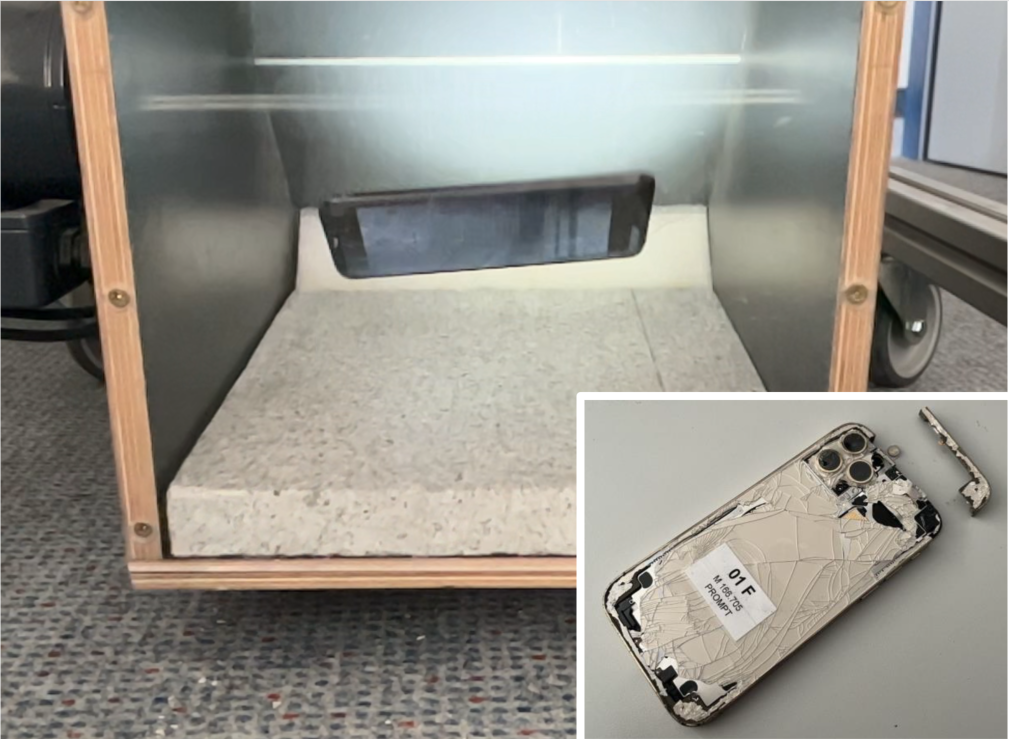Durability and Product Lifetime
The main objective of WP 3 in the project PROMPT is to analyse scientifically an approach to reliability testing that can be addressed from an end users perspective when the product is put on the market. For example a smartphone will need to survive a range of different drops on the floor. In this case a tumble drop test can mimic this situation. In order to be relevant, such a test needs a detailed scope and specification. The approach to develop such test specifications is focussed around four product groups (washing machines, vacuum cleaners, smartphones, TVs) and explained in the reports given in this section.

Generalization of approach and summary of results
Deliverable 3.6
Authors: Daniel Hahn et al.
Contact for organisation: olaf.wittler@izm.fraunhofer.de
This report gives an overview on the methodology to develop tests for reliability and durability. It focusses on the considerations to be done in the set-up of a test program from the perspective of a consumer organization or market surveillance authority. In this situation, reliability is to be assessed, when the product is placed on the market. Relevant results from the PROMPT project are summarized, which are focused around the analysed product groups. In order to enable the transfer of results to other relevant product groups and aspects a generalization is being discussed. Finally a generalized procedure for test and mission profile development is suggested.
Please note, that this is a preliminary version of the deliverable and might be subject to changes after the periodical review as part of the H2020 review process.
Test Results and Specification for Batteries and Electronics
Deliverable 3.4
Authors: Robert Hahn, Daniel Hahn, Michael Morys, Tom Thyssen, Nicole Bernefeld
Contact for organisation: olaf.wittler@izm.fraunhofer.de
In this report the main focus is to document the analysis done so far and to derive recommendations for a
test plan for batteries and electronics. It adresses:
- Test of battery cells in lab environment: Two sets of experiments for evaluation of ageing and extraction of model parameters have been executed (small batteries and mobile phone
batteries): - Test of battery cells in realistic use environment: a test program was conducted for lithium-ion battery systems. The program was exemplified for cordless tools of 18V class on 8 multi-functional battery platforms for cordless tools from different manufacturers.
- In a theoretical analysis a test approach for electronics has been proposed and derived, which is based on mission profiles and accelerated tests. The methodology is applicable to different product groups and involves the separate
accelerated loading of electronic modules.
Please note, that this is a preliminary version of the deliverable and might be subject to changes after the periodical review as part of the H2020 review process.
Test Results and Specification Mechanics
Deliverable 3.5
Authors: Harald Reichl et al.
Contact for organisation: harald.reichl@rusz.at
The main objective of the underlying work task was the identification of failure modes and mechanisms to be covered by testing for the selected four product groups resulting in a recommendation for possible test approaches to detect premature obsolescence on mechanical parts. This task will result in developing a testing procedure and evaluation criteria for mechanical parts of washing machines (WM) and vacuum cleaners (VC). This Deliverable/report presents our results for Mechanical Structures and contributes to the transfer of test specifications.
Please note, that this is a preliminary version of the deliverable and might be subject to changes after the periodical review as part of the H2020 review process.
Product Group Analysis
Authors: Daniel Hahn, Frederic Sehr, Stefan Straube, Tom Dobs, Anton Berwald, Olaf Wittler, Martin Schneider-Ramelow
Contact for organisation: daniel.hahn@izm.fraunhofer.de
Four consumer product groups (Vacuum cleaners, washing machines, mobile phones and television sets) have been analysed in regard to the current state of durability assessment. The dominant failures have been determined and compared to the current test programs. Gaps in current tests as well as requirements for tests to close these gaps have been identified.
published in: Electronics Goes Green+, Berlin, September 1, 2020
